A tour of Sicily: Exploring the North-Eastern Coast
In this tour through the wonders of the Queen of the Mediterranean we have got lost in the maze of Ortygia in Syracuse, tasted traditional delicacies such as the chocolate of Modica, relaxed beneath the Scala dei Turchi and we have taken a plunge back in time in Agrigento. However, as we have already stated this island can boast countless treasures to visit and enjoy… so if you still have a few days left on your holiday in Sicily, then do not miss out last Sicilian stop to admire some of its most famous and fascinating spots!
3rd stop: The North-Eastern Coast – The Land of La Dolce Vita
Leaving from Agrigento it will take about two and a half hours to reach our last stop. From the town of the temples we need to head towards the North-Eastern coast, one of Sicily’s three ‘legs’ and the part of the island closest to the mainland. Even though it is quite a long journey, it will give you the chance to admire Sicily’s fascinating inland landscape with its rolling hills, its wide cultivated fields and austere towers dating back to the Arabic and Norman reigns which dominate the cities’ historical centres and the surrounding landscape. After a couple of hours, Etna’s smoking peak will appear again and heading North from the town of Catania you will soon reach one of the island’s most glamorous cities.
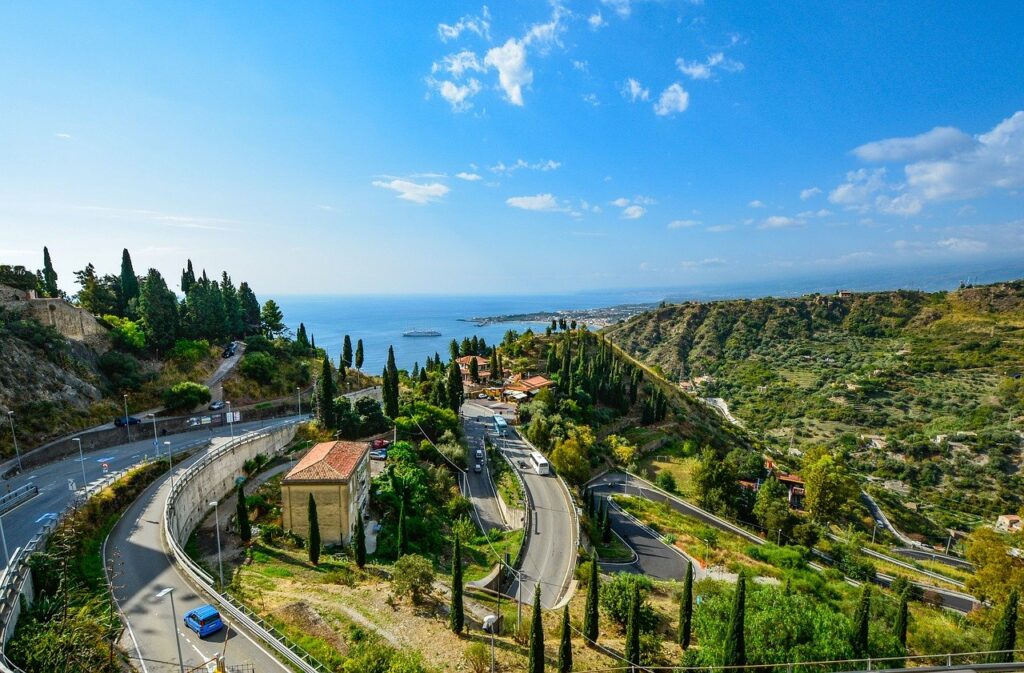
The German poet, Goethe, described it as ‘the greatest work of art and nature’ and once there you will soon understand why. Taormina lies on a rocky spur of Mount Tauro, 200 metres above the blue Ionian Sea and it fits so perfectly with the lush surrounding landscape that it is almost impossible to imagine the work of men without the work of nature and vice versa, as if the town had always been there. The founders of the first settlement were local inhabitants, soon joined by the survivors of nearby Naxos, Sicily’s first Greek colony which was later destroyed and conquered by the tyrant of Syracuse.
During its long history, Taormina has grown and changed under the reigns of different peoples coming from all over the Mediterranean world and in the 18th century its hidden beauty was finally discovered by a wider audience, resonating throughout Europe’s noble residences. The town became an unmissable stop of the famous Grand Tour as a place of great archaeological importance, but its fame was not linked solely to its Classical past for long. During the 19th and early 20th centuries, Taormina established itself as an important destination of the international jet set, a place where kings, queens, aristocrats and artists could gather during the Winter months to enjoy the mild Mediterranean weather and the real dolce vita. At that time you could find king George V and the Emperor William II in the luxury hotels and residences and later Pablo Picasso and Greta Garbo in the picturesque flats of the historical centre as well as Oscar Wilde, Ernest Hemingway or Truman Capote writing and relaxing in one of the main cafés. An English aristocrat who chose Taormina as her new home was then Florence Trevelyan, the creator of what is now known as the Isola Bella. This rocky little island, connected to Sicily through a short strip of sand, was bought by lady Florence and her husband at the end of the 19th century and, thanks to the lady’s passion for botany, this place is now home of a lush Mediterranean park and part of a natural protected area.

Its amazing position makes Taormina a perfect holiday destination for all sea lovers, but the city’s real treasures are in its vibrant heart, the historical centre. Although international fame and mass tourism have partly undermined the charm of la dolce vita of Taormina, along Corso Umberto I and the numerous alleys up and down the centre you can still admire picturesque buildings and find traditional cafés and restaurants in which to relax. Once in Piazza IX Aprile, the city’s public ‘living room’, you can just enjoy the breathtaking views over the Ionian Sea, the ancient Naxos – today an important seaside resort – and the imposing Etna from the terrace of the square!
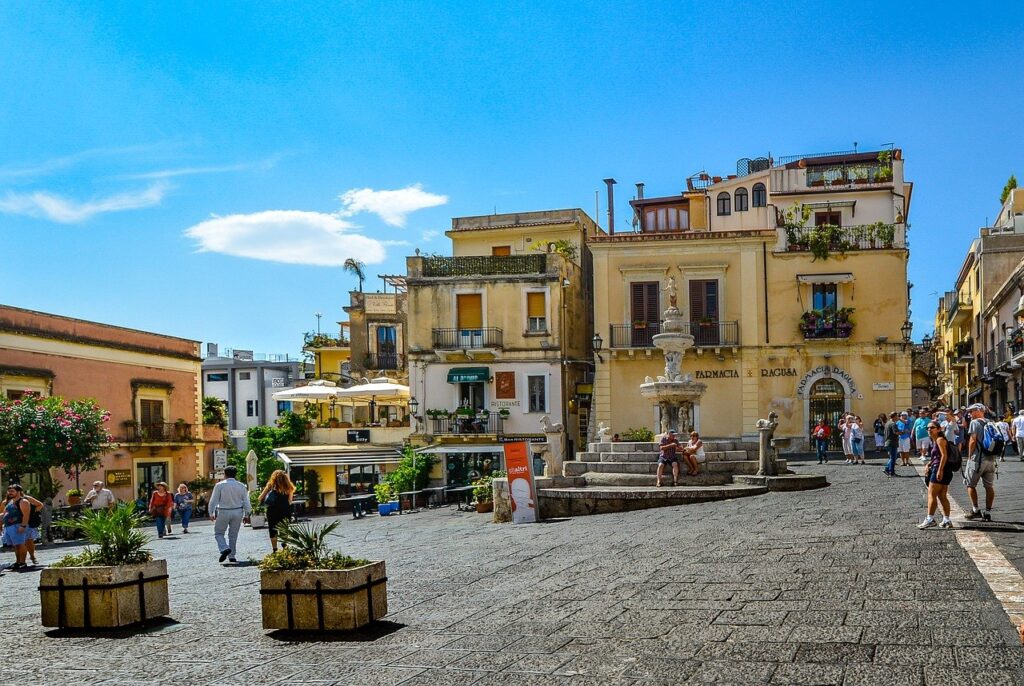
Before leaving the city be sure to spare some time to visit Taormina’s main attraction, the ancient Greek theatre, the second largest Classical theatre in Sicily after the one in Syracuse. With its big stage and the perfect acoustic this is the place of an important season of events every year, but its location is what makes it a real gem. On top of the theatre, looking north, you will be able to see ‘the continent’, the southern coast of Calabria, while if you take a seat on the highest steps and look south, you will be able to admire a spectacular view: between the high columns behind the stage you will see the green of the lush forest on the hill, the blue of the sea, the colourful houses of the town centre and the smoking crater of Etna behind… that alone makes Taormina worth a visit!

The nearby area also offers other natural and cultural attractions to enjoy. If you are into wild nature or sport and adventure during your holiday, then you should not miss the chance to visit the Alcantara Gorge. Part of a botanical and geological park, these spectacular canyons have volcanic origins and visitors have the chance to experience them through a wide range of itineraries and sports, including canyoning and body rafting… the perfect choice for spending some fun moments with your family!
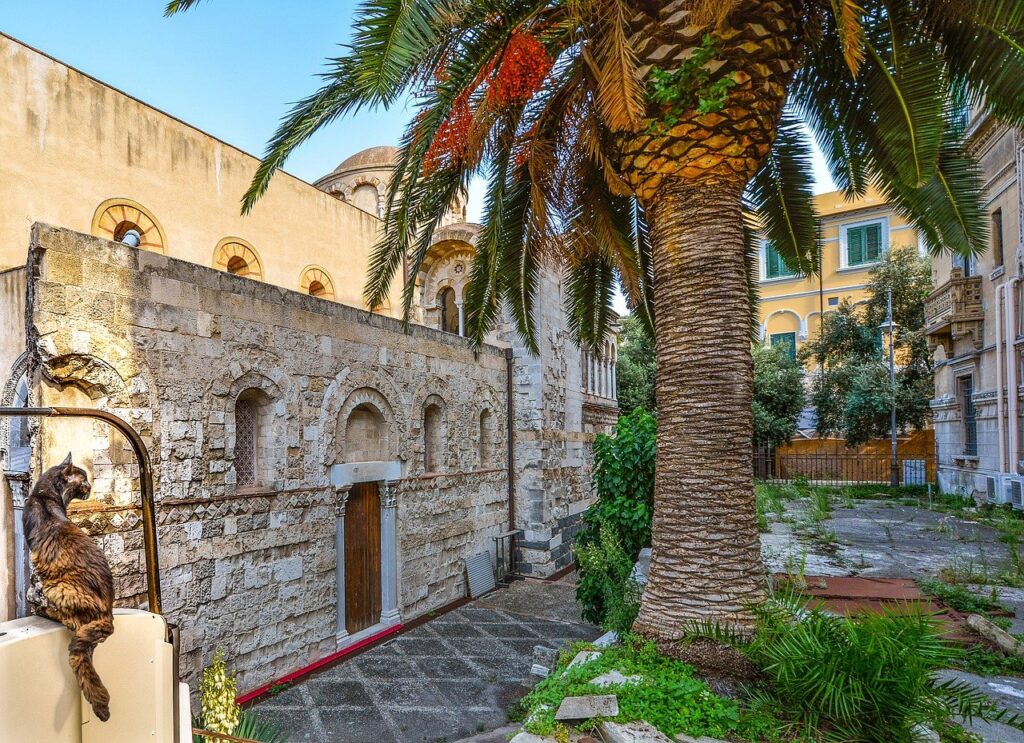
Just 50 kilometres away from Taormina is then the province’s capital, Messina, an important cultural centre and the most ‘continental’ of Sicilian cities. Messina is actually the closest town to the coast of Calabria and, therefore, Italy. All the busiest and most frequent links to the mainland are based here and once in Messina, it is quite impressive to see how close the two coastlines are. Some interesting sights of the town include the Cathedral of Santa Maria Assunta and its bell tower, which boasts one of the most complex astronomic clocks in the world, as well as the Regional Museum of Messina. The province’s capital is also an interesting place to visit if you are into mythology: this is the town of the deadly Charybdis, the dangerous whirlpool described by Homer that made the Strait of Messina a place of danger and destruction for all sailors in Greek mythology, together with Scylla, the sea monster located near the coast of Calabria!
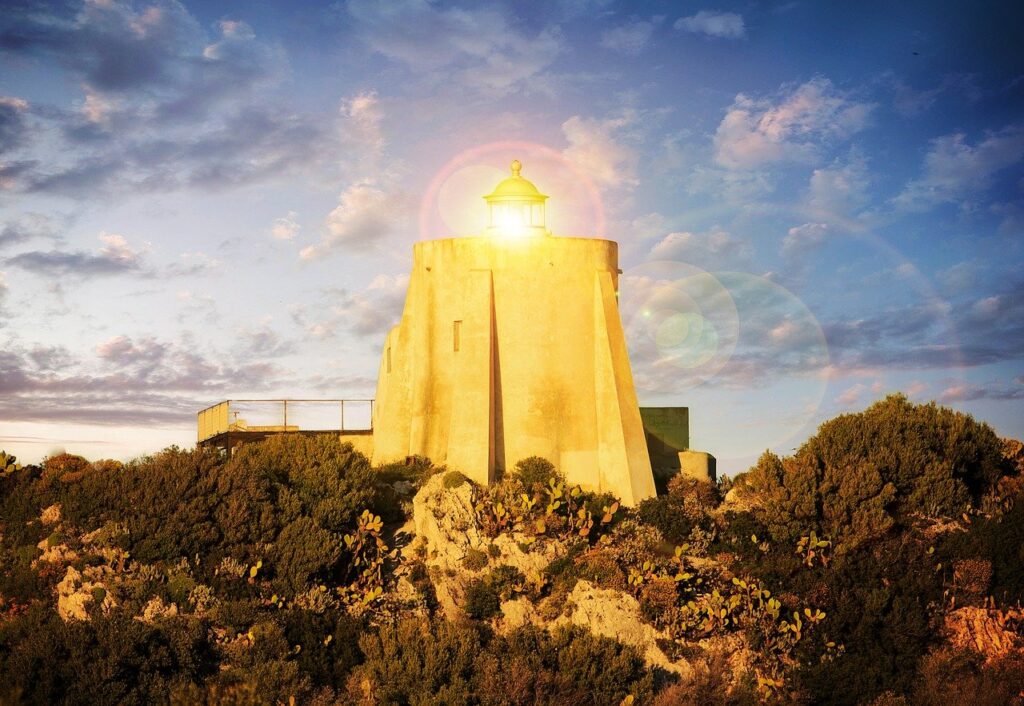
Heading west from Messina you will find a long strip of land, a small peninsula surrounded by the clear Tyrrhenian Sea. In this fascinating location is the town of Milazzo, a famous seaside resort that can boast an interesting historical centre and a long promenade by the sea. This is also the city which enjoys the main links that connect Sicily to one of its most precious gems, the Aeolian Islands. This archipelago made up of seven wonderful volcanic islands is part of the UNESCO World Heritage List and one of the most active areas on earth. One of the islands, Stromboli, is home to a giant volcano and it is famous for its daily eruptions… luckily they last just a few seconds! Even though the area may seem a little unstable, all the volcanos are constantly monitored by national and regional authorities and the presence of this great geological phenomenon is what makes the Aeolian such a unique place. Sadly, during my tour I did not have enough time left to visit all the seven islands, so I decided to pick just one of them… Guess which one I chose? Well, of course the one whose name is a clear statement of what you will find there: Vulcano!
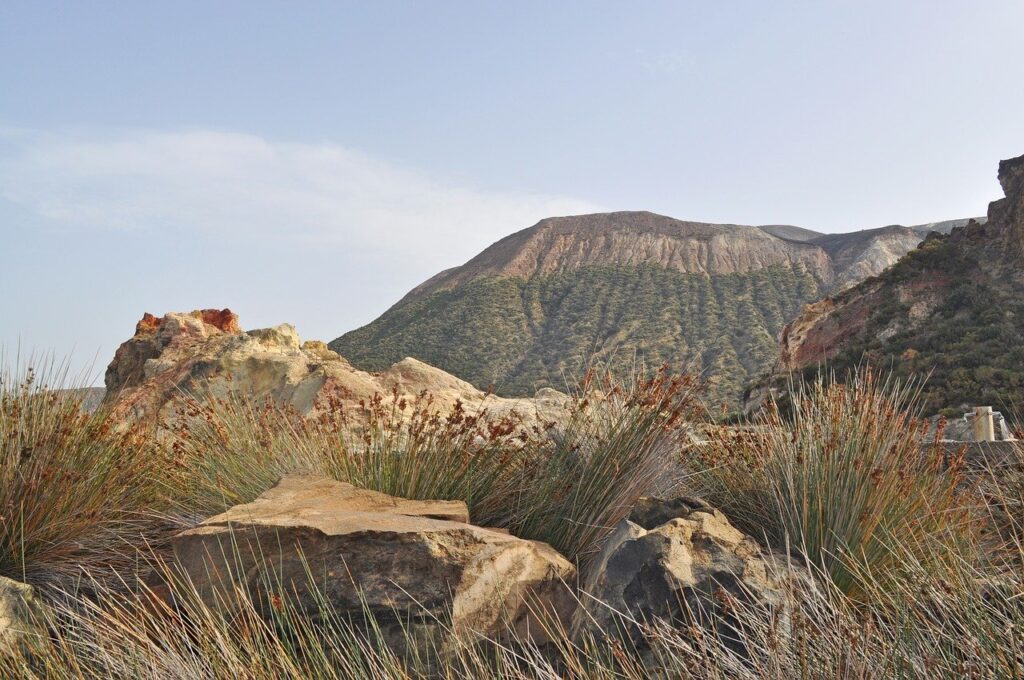
This island is the closest one to Sicily and its name comes from mythology: Greek colonists believed that the giant mountain was the home of Hephaestus, the god of fire, later renamed Vulcano by the Romans, giving the island and the entire geological phenomenon this name. Once there you will immediately notice the giant crater dominating the main town and the entire island. Although it is still an active volcano, its last eruption dates back to the 19th century and I must admit that while looking at it I felt no fear but a great sense of respect and some sort of protection instead! The main centre is a very small town made of souvenir shops and traditional restaurants, where you can taste amazing dishes made of fresh fish and the island’s main treasure, capers, the salty fruits used as a tasty ingredient for salads, pasta and main courses. Spiaggia Sabbie Nere is the widest beach on the island and the easiest one to reach. Just 1 kilometre away from the port and the centre, its name comes from its black volcanic sand and it is a perfect choice for families with young children looking for a chance to relax. However, for a true ‘volcanic’ experience I suggest you visit Acque Calde, a beach opposite Sabbie Nere where you can have a bath in the warm sulphurous waters of the sea among small geysers under the sand!
Vulcano is a wild and fascinating island and its inhabitants offer a wide range of possibilities to explore it. If you are looking for a more relaxed and romantic way to visit, you can make the most of one of the many boat tours and have the chance to see the island from the sea, enter some of its most famous caves and take a plunge in the blue waters offshore, while if you are more into adventure you can try climbing the volcano and reach its crater or how about renting a quad bike and making your own personal itinerary!
This tour would probably take two or three days, but if you want to explore the Aeolian Islands in more in depth than you may consider a couple of days more: Stromboli, Filicudi and Alicudi are the wildest islands of the archipelago and the perfect choice for all adventure lovers, Salina is the second largest one boasting a wonderful natural park, while Lipari and Panarea are both famous destinations for the international jet set where you can find many activities and a vibrant night life.
At the end of this long tour with its three main stops you will have experienced some of Sicily’s greatest treasures. Still, not all of them! This island is so varied and rich that you can always find hidden gems and new reasons to visit. However, every kind of Sicilian tour, a 1000 kilometre-long one or a short weekend break, is enough to understand what Goethe wrote in his ‘Italian Journey’, where he claimed that having visited Italy without a visit to Sicily is like not having visited Italy at all ‘for Sicily is the clue to everything.
Yet again, a huge thank you goes to Domiziana Lecci who shared the details of her Summer 2020 holiday in Sicily with us, bringing them to life on our blog so that you can be inspired by her Sicilian journey. If you haven’t yet had a chance to read about the first two chapters in her Sicily vacation, then find out about her stay in South-East Sicily along with her time in South-West Sicily.
If you would like some help finding somewhere to stay in Sicily, then take a look at our range of villas in Sicily, perfect for your next Sicily holiday.


